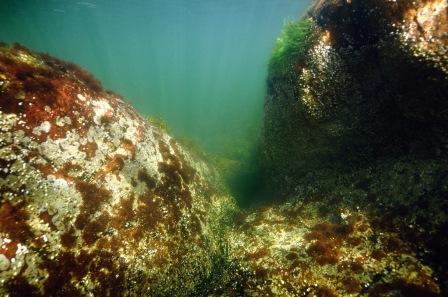PROTECT
Completing the HELCOM MPA1 network, and the data and information on the marine protected areas of the Baltic Sea

What is PROTECT?
The HELCOM PROTECT project aims to assess and improve the status of the network of marine protected areas in the Baltic Sea. In addition, the project intends to modernize HELCOMs protected areas data management capacity and carry out an analysis of ecological coherence of the network of protected areas in the Baltic Sea.
Background
The main policy drivers of this project are the decisions taken by the HELCOM Ministerial Meetings in 2003 and 2007 (the Baltic Sea Action Plan) on marine protected areas, as well as the decision taken by the HELCOM 2010 Moscow Ministerial Meeting “to secure the establishment of a network of Baltic Sea Protected Areas (BSPAs2) that fulfills the criteria of ecological coherence (representativeness, replication, adequacy and connectivity) and thereby contributes to the protection of the entire ecosystem; … in doing so, to focus on: the needs for providing protection to species and habitats identified in HELCOM as being threatened or declining […]; including off-shore areas also in the Exclusive Economic Zone with the aim that BSPAs2 not only cover a total of at least 10% of the Baltic Sea Area as a whole, but also when scientifically justified, at least 10% of all its sub-basins”.
The Aichi target 11 of the UN Convention on Biological Diversity (CBD) is crucial as it specifies targets for the proportion of marine area to be conserved: “By 2020, at least […] 10 percent of coastal and marine areas, […], ecologically representative and well-connected systems of protected areas […]”.
Current activities
Modernisation of the HELCOM MPAs database
The modernisation of the HELCOM MPAs database was intiated in 2014 and will continue in 2015. The aim is to create an approachable database via restructuring the information, and to harmonise it as much as possible with OSPARs MPA database and Natura 2000 database. The new database will also contain a direct connection to the HELCOM Map and Data Service and enable the Contracting Parties to easily upload data, and for any user to view, download and analyse the geographically referenced data in the system.
The HELCOM BSPA1 online database was
created in 2004 to serve as an information bank for the HELCOM MPAs (then known as BSPAs), as well
as a tool for the Baltic Sea countries to upload and update information
on their own BSPAs. The current structure of the database is outdated
and too rigid to meet the growing demands of the information connected to the MPAs.New HELCOM recommendation 35/1 on the HELCOM MPAs
The new HELCOM Recommendation 35/1 on the System of coastal and marine Baltic Sea protected areas (HELCOM MPAs1) was adopted 1 April 2014. The recommendation supersedes the previous recommendation on HELCOM MPAs, HELCOM Recommendation 15/5. With the adoption of the new recommendation the acronym was changed from HELCOM BSPAs to HELCOM MPAs1.
Overview report on the network of HELCOM MPAs
The report Overview of the status of the network of Baltic Sea marine protected areas was published in September 2013. It is based on the updated data on the BSPAs, and assesses whether targets set by HELCOM, EU and UN have been reached.
Data update
The central data on the Baltic Sea Protected Areas (BSPAs1) was updated in June 2013. The updated data is available in the BSPAs database.
Upcoming activities
Analysing the ecological coherence of the network of marine protected areas in the Baltic Sea
The ecological coherence (representativeness, replication, adequacy and connectivity) of the network of marine protected areas in the Baltic Sea was analysed in 2010, simultaneously with the previous overview of the network (BSEP 124B: Towards an ecologically coherent network of well-managed Marine Protected Areas). It was concluded that despite positive development in previous years the network was still not ecologically coherent. The main problems were a lack of connectivity between different BSPAs and uneven distribution of the protected areas, in particular a lack of protected areas in the EEZ.
A new assessment on the ecological coherence of the marine protected areas in the Baltic Sea is going to be intiated in 2015. The results from this analysis will be employed when proposing possible new sites to be established as protected areas, with emphasis on improving the ecological coherence of the network.
1) Former HELCOM BSPAs.
2) In 2014 the acronym was changed from BSPAs to HELCOM MPAs.
Project Researcher (PROTECT)
Ms. Janica Borg
Phone: +358 40 662 0101
Email: janica.borg@helcom.fi
Professional Secretary
Ms. Ulla Li Zweifel
Phone: +358 46 850 9198
Email: ullali.zweifel@helcom.fi

